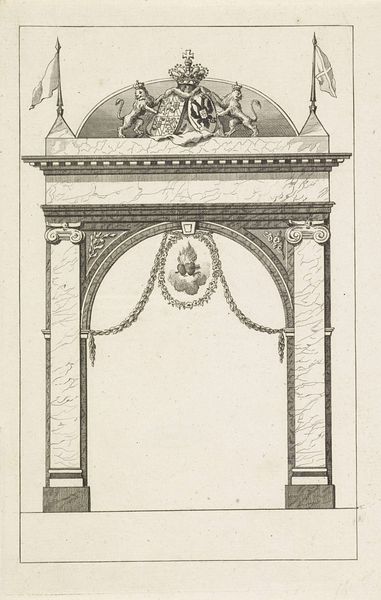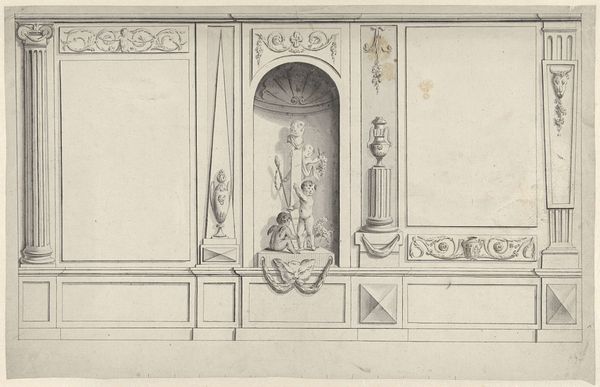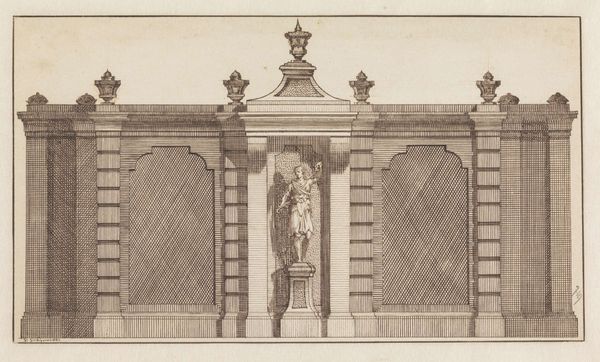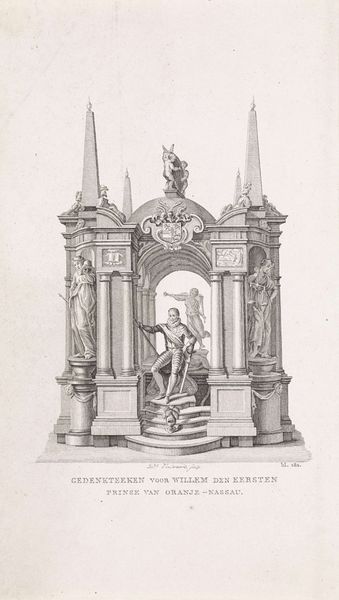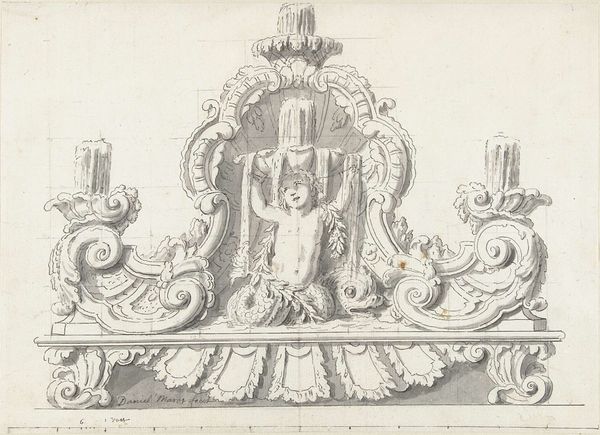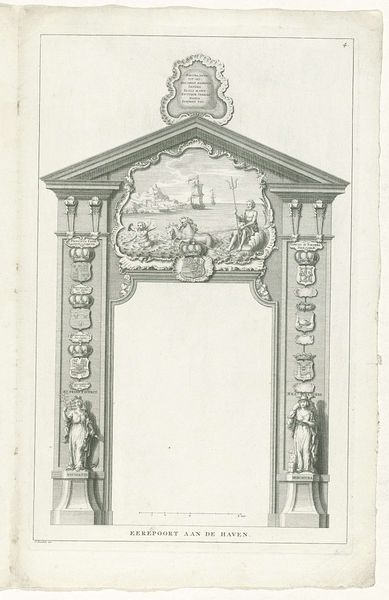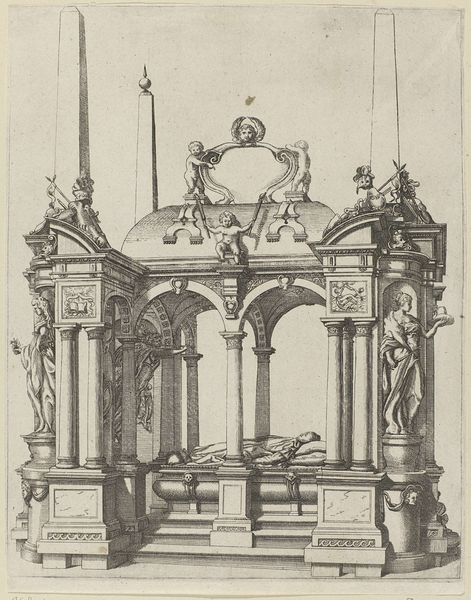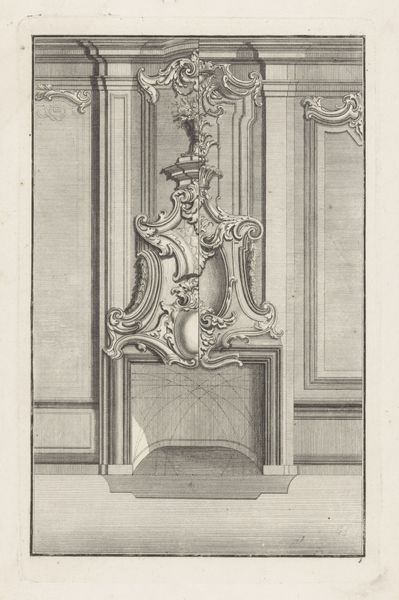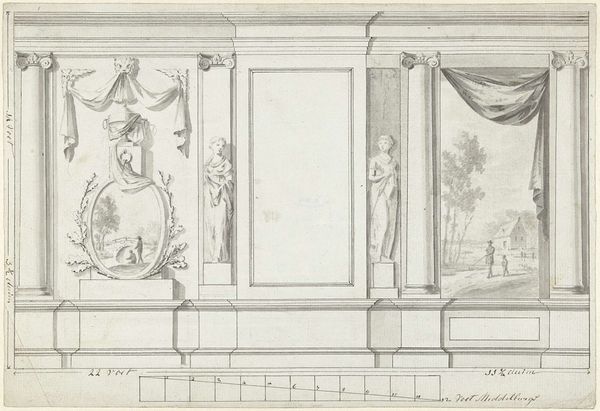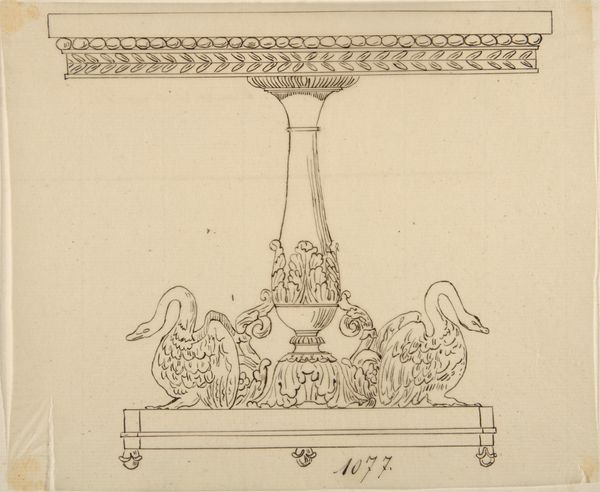
drawing, pencil, architecture
#
drawing
#
neoclacissism
#
landscape
#
pencil
#
architecture drawing
#
cityscape
#
architecture
Copyright: Public Domain: Artvee
Editor: Here we have Johann Peter Krafft's "Fountain in the Peach Garden of the Upper Belvedere," a pencil drawing from 1850. The careful symmetry immediately gives it a sense of balance, yet there's also a wistful feeling evoked by the aged paper and the soft lines. What strikes you about this drawing? Curator: I'm drawn to how the fountain acts as a cultural echo. Fountains have always been central to civic identity – places of gathering, cleansing, and storytelling. This design, neoclassical in its aspiration to ideal form, layers meanings. The figures are reminiscent of classical ideals – observe the reclining figures, they recall river gods, representing power and abundance. What feelings are evoked? Editor: I think there is a slight disconnect from the subject; in terms of emotional response, I am most struck by its being rendered in pencil and not the actual classical imagery. I find the contrast so fascinating! Curator: Yes, that contrast is key. Krafft uses the accessibility of pencil – a medium of the everyday – to capture a design intended for permanence and public admiration. What happens to the meaning when the grand aspirations of Neoclassicism are mediated through something so...domestic? Editor: So, it is almost as if the architectural symbolism takes on a more private meaning because of the medium chosen to represent it? Curator: Precisely. By recording it in pencil, Krafft transforms a public symbol into something intimate and introspective. The act of drawing, in this case, becomes an act of personal interpretation of shared cultural ideals. Does that make you look at the image differently now? Editor: It certainly does. I initially viewed it as a straightforward rendering, but I now appreciate how the medium invites a more complex understanding of public and private meanings embedded within these historical symbols. Thank you. Curator: A pleasure.
Comments
No comments
Be the first to comment and join the conversation on the ultimate creative platform.
